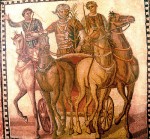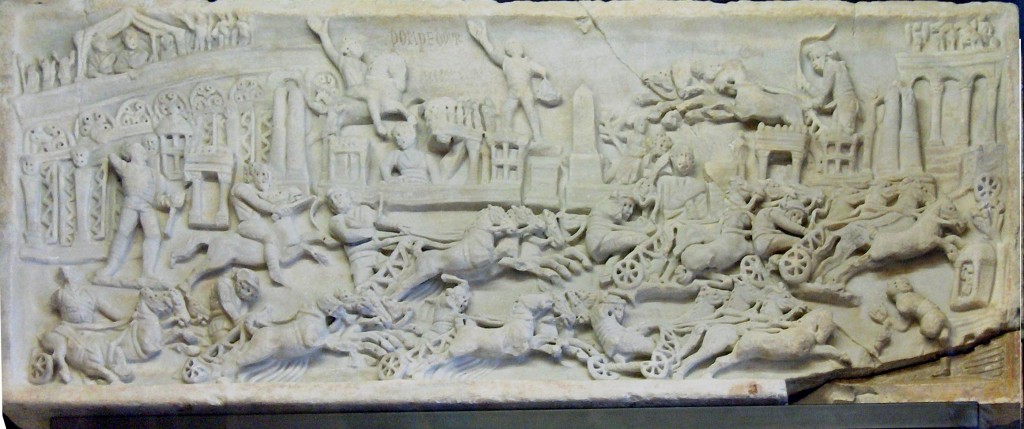Last year, before a certain late night car accident in Florida, Forbes Magazine declared Tiger Woods the first athlete to make over 1 billion dollars. That’s just modernocentrism, though, because Tiger Woods at his peak earning power was a shiftless hobo compared to Gaius Appuleius Diocles.
Gaius Appuleius Diocles was an illiterate 2nd century Lusitanian who made the biggest of the big time on the hugely popular chariot-racing circuit in Rome. Romans took their chariot races very, very seriously. There were 4 stables called factiones — the Reds, Blues, Whites, and Greens — identified by the colors of their jerseys, and riots between faction fans were a regular occurrence. The Circus Maximus sat 250,000 rabid fans and the stands were always packed.
 Diocles started off racing for the Whites in 122 A.D. He then moved to the Greens and finally ended up with the Reds, where he spent the rest of his career winning like crazy. When he died in 146 A.D. at age “42 years, 7 months, and 23 days” his colleagues and fans erected a monumental inscription acclaiming him the “champion of all charioteers” and describing in obsessive-sports-fan-stat detail his races, records, victories and purses.
Diocles started off racing for the Whites in 122 A.D. He then moved to the Greens and finally ended up with the Reds, where he spent the rest of his career winning like crazy. When he died in 146 A.D. at age “42 years, 7 months, and 23 days” his colleagues and fans erected a monumental inscription acclaiming him the “champion of all charioteers” and describing in obsessive-sports-fan-stat detail his races, records, victories and purses.
Grand totals: He drove chariots for 24 years, ran 4,257 starts and won 1,462 victories, 110 in opening races. In single entry races he won 1,064 victories, winning 92 major purses, 32 of them (including 3 with six-horse teams) at 30,000 serstertii, 28 (including 2 with six-horse teams) at 40,000 sestertii, 29 (including 1 with a seven horse team) at 50,000 sestertii and 3 at 60,000 sestertii. […] He won a total of 35,863,120 sestertii.
We can’t convert ancient currency to contemporary figures mathematically because there’s just too much water under the bridge to generate significant figures. What we can do, however, is compare buying power. We know that 35,863,120 sestertii, his total career winnings, was 5 times what the highest paid provincial governor would have made during that same time period. It was also enough to buy grain for the entire city of Rome for a year, or to pay the salary of the entire Roman army at the height of empire for a fifth of the year.
If we compare that buying power to the cost of fielding the U.S. Army today for a fifth of the year, 35,863,120 sestertii amounts to $15 billion. And this is just in purse money. No tens/hundreds of millions in endorsement cash. I don’t think any athlete today could come remotely close to that figure.
